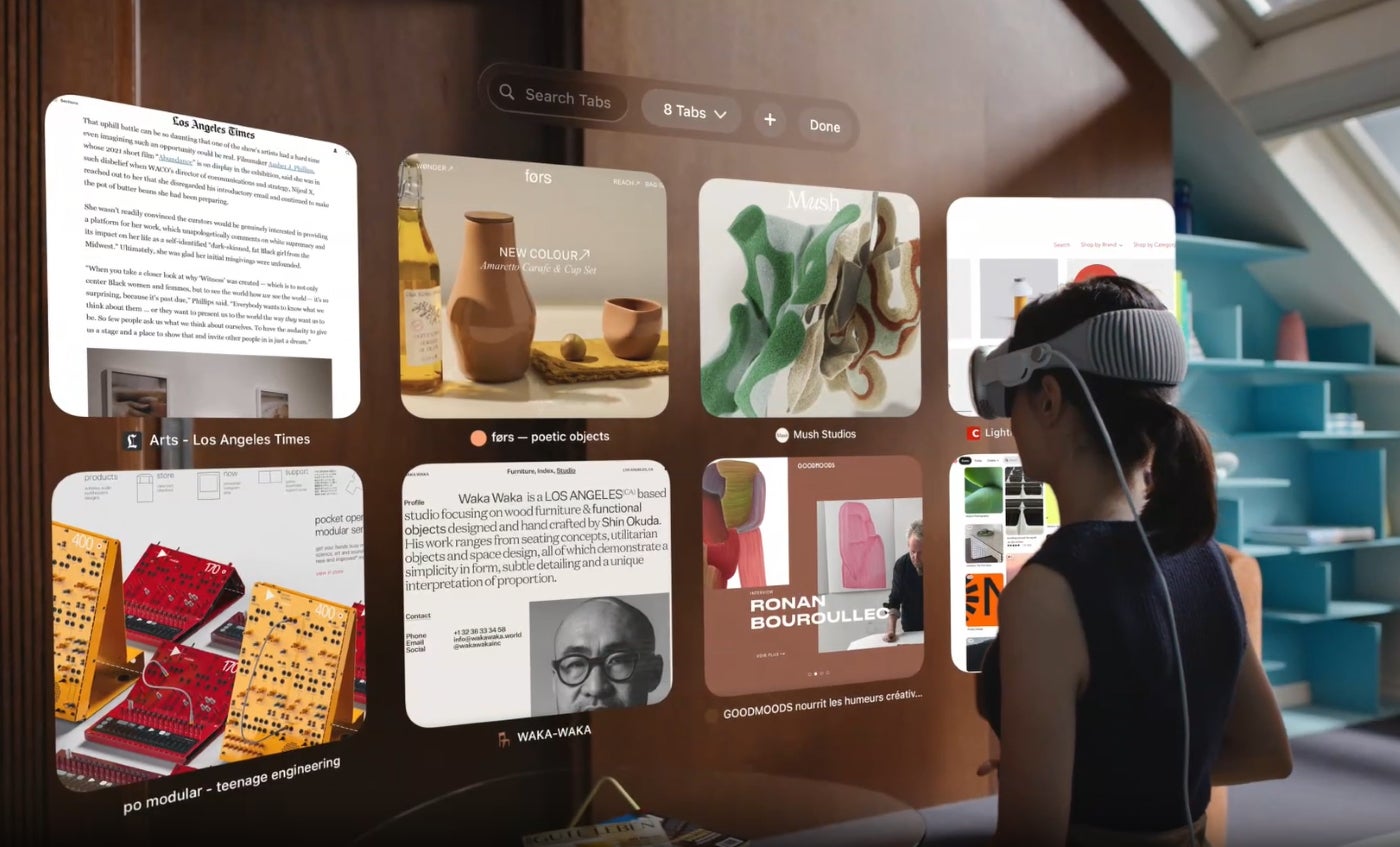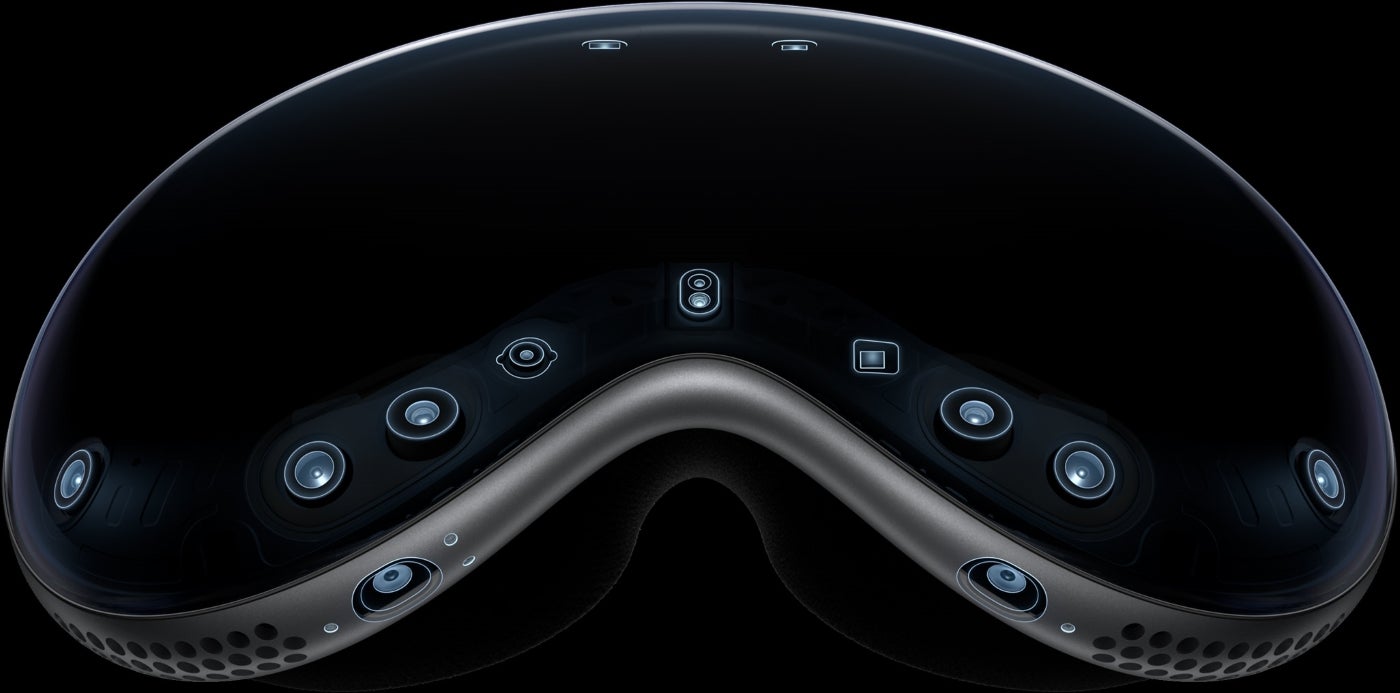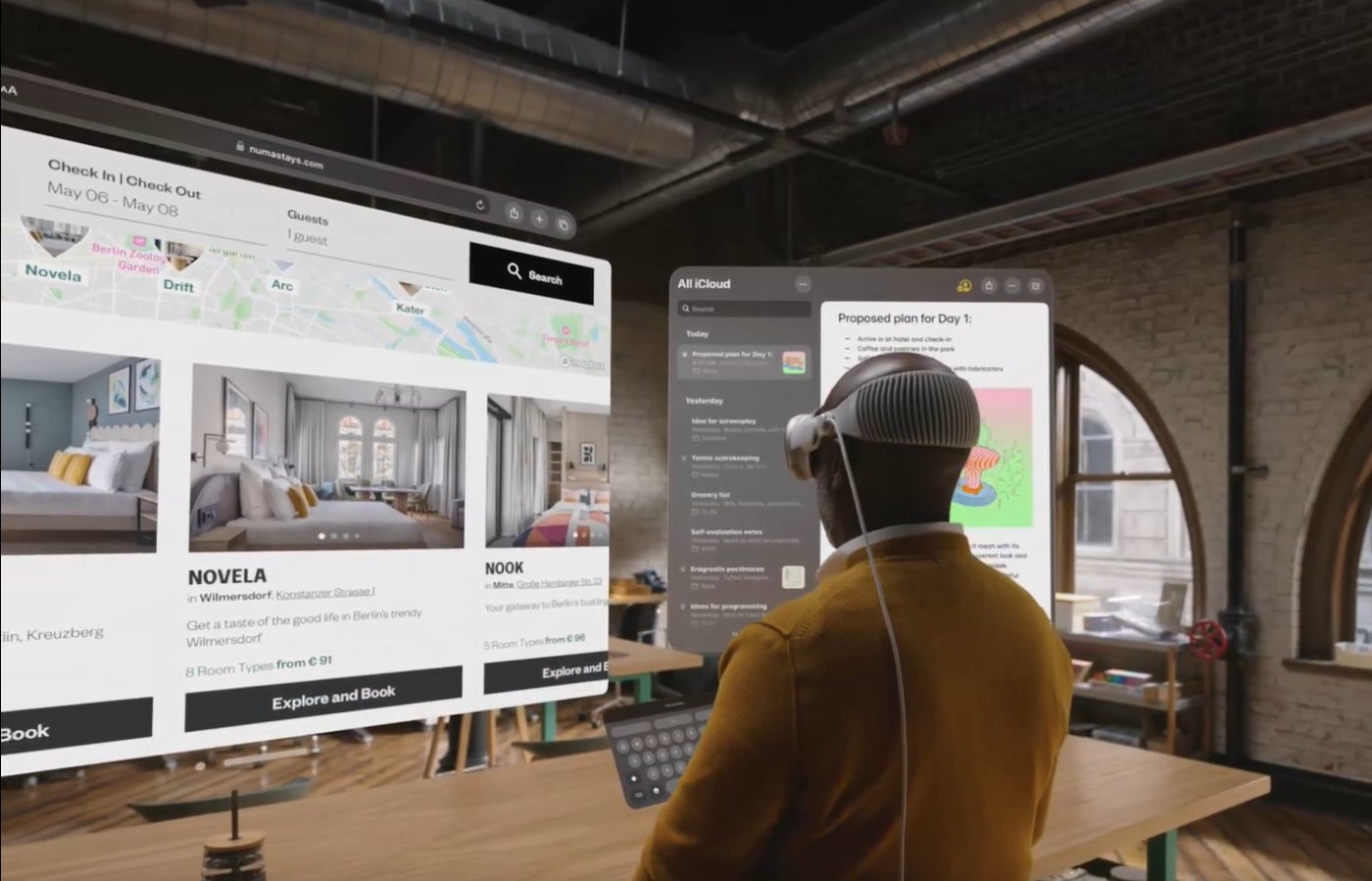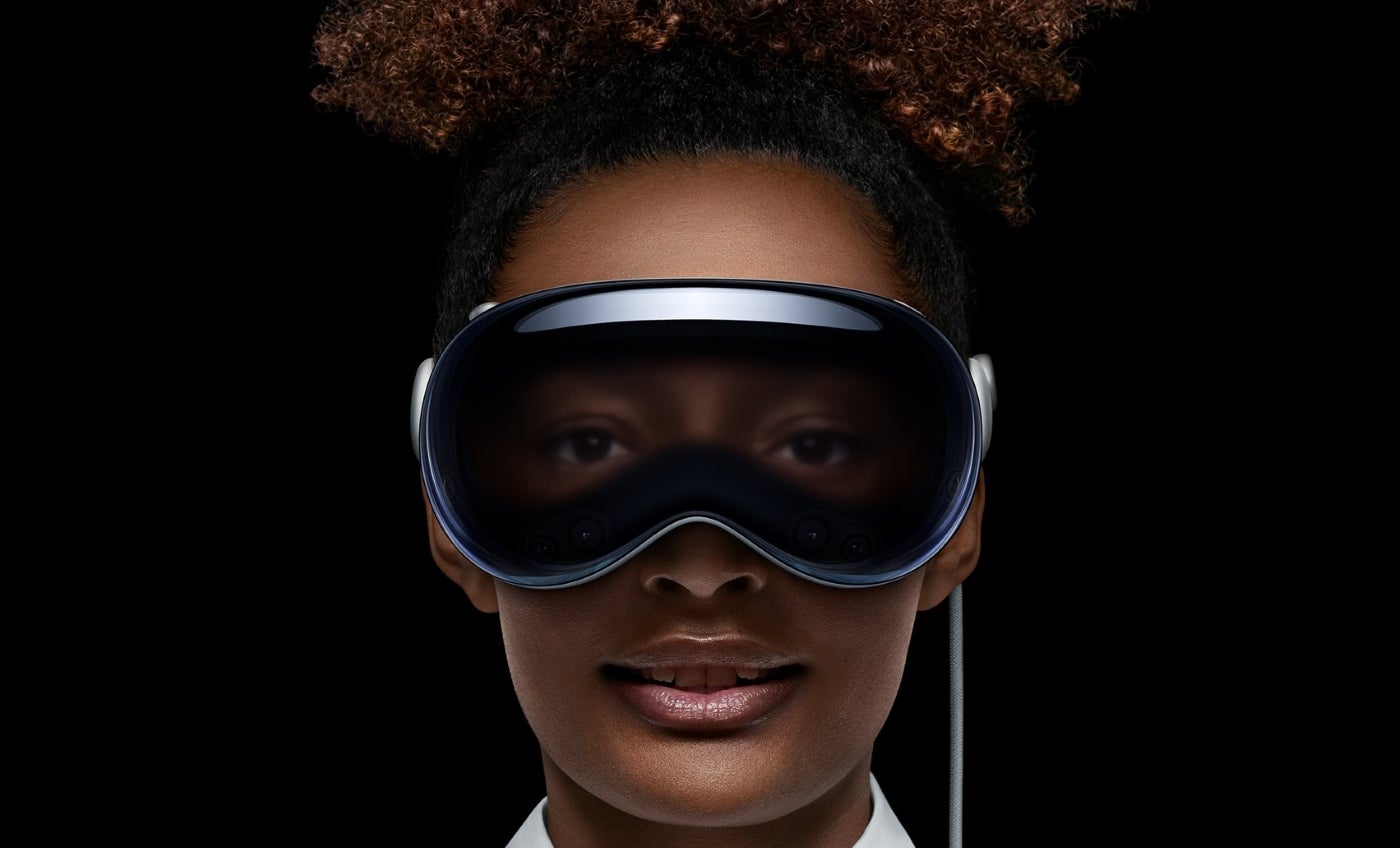
After years of anticipation, Apple finally revealed an AR headset, Vision Pro, during Monday’s keynote at the 2023 Worldwide Developers Conference. Despite the fact that Vision Pro can deliver immersive mixed reality and VR experiences, the headset is designed not to immerse users in a virtual world but rather augment reality.
We break down the details about Apple’s Vision Pro, including price, release date and features.
Jump to:
- What is the price of Apple’s Vision Pro?
- When is the release date of Apple’s Vision Pro?
- What are Vision Pro’s main features?
- Bottom line about Apple’s Vision Pro
What is the price of Apple’s Vision Pro?
The price of Apple’s Vision Pro is $3,499, which is more than three times the price of its main competitor, Meta’s Quest Pro VR headset, which starts at $999. More than 20 million units of Quest Pro have been sold.
When is the release date of Apple’s Vision Pro?
During WWDC23, Apple announced that Vision Pro will hit the market in early 2024. Initially, the AR headset will only be available in the U.S., with other countries seeing the product launch later the same year.
SEE: In 2022, Apple reportedly demoed mixed-reality headset to its board.
What are Vision Pro’s main features?
Vision Pro (Figure A) offers a wide range of features. From virtual meetings and highly rendered avatars to 3D images, AR computing and film viewing on a big screen, Vision Pro is designed to seamlessly blend digital content with a user’s physical space.
Figure A

“It’s the first Apple product you look through, not at,” CEO Tim Cook said during the product presentation. Cook added that Vision Pro would introduce spatial computing like how the iPhone introduced mobile computing.
Graphic user interface
The user interface of Vision Pro mimics that of a Mac or an iPhone, but in 3D. Users wearing the headset will see icons, graphics, websites, photos, and movies as floating screens at a distance from their eyes. Displays are the size of a postage stamp, but these deliver more pixels than a 4K TV to each eye. The custom micro-OLED display system features 23 million pixels, providing excellent resolution and real-life colors.
A new computer, apps and camera
During WWDC23’s keynote, Apple showed how users can seamlessly connect a keyboard and use Vision Pro as a traditional computer that offers multiple large displays (Figure C).
Figure C

With Vision Pro, users can customize how they see their apps. For instance, apps can be arranged and scaled in size, and workspaces can be designed for personal needs. While using apps, browsing on Safari, chatting on Messages or working, users can switch between apps quickly, always staying present in the real world.
Another function in Vision Pro allows users to use a three-dimensional camera and a microphone system to capture videos and pictures in 3D. This is the first 3D camera Apple has ever built. It includes panoramas that wrap around the user.
The R1 chip
The Vision Pro experience is possible thanks to two chips: the powerful M2 and R1, a new and exclusively developed real-time chip. R1 is responsible for processing all the data from the sensors and cameras in the blink of an eye, along with real-time 3D mapping and eye-tracking (Figure D).
Figure D

Navigating Vision Pro: Hand gestures and digital crown
The R1 chip takes all the data from sensors, cameras and microphones embedded in Vision Pro and creates head, eye and hand tracking. Users can select content inside the goggles with their eyes, tap their fingers together to click and gently flick to scroll. Using the digital crown, users can bring up the Home View or control the level of immersion while using Environments, a feature that creates virtual backgrounds.
Product design
The design for the enclosure is a singular piece of 3D-formed laminated glass that morphs into an aluminum alloy frame and gently curves to wrap around a user’s face. The headset’s exterior display can also reveal the user’s eye to people in the outside world or fully darken when the user is submerged in virtual reality (Figure E).
Figure E

Spatial Audio
Vision Pro analyzes an environment’s acoustic properties, including the physical materials, to adapt and match the sound to the space. This is used to create ambient Spatial Audio, where sounds feel like they are coming from the surroundings.
Apple assures that the Spatial Audio system of Vision Pro is the most advanced it has ever created. Dual-driver audio pods are placed close to the users’ ears, blending the sound generated by the headset with the sounds of the real world.
AR FaceTime
Vision Pro takes virtual meetings to the next level with life-size FaceTime video tiles. The call expands into the room, and the headset allows users to use apps to collaborate with colleagues or work on the same documents while in a meeting.
Battery
Vision Pro has two hours of use with an external battery, which is not placed inside the headset to reduce the weight on the user’s head. The device must be plugged into the wall or battery pack.
Home theater
Although Apple’s new headset is through AR technology, it does have several virtual reality features, such as its immersive home theater. Vision Pro can transform any room into a personal theater.
Bottom line about Apple’s Vision Pro
Vision Pro is one of the most anticipated products Apple has ever launched. Unfortunately, the AR headset’s price is very high compared to alternatives. Additionally, despite a very well-achieved design, Vision Pro is clunky.
However, the new Apple headset proves revolutionary in its approach to AR technology and appears to bring the quality that Apple is known for to this new market.






